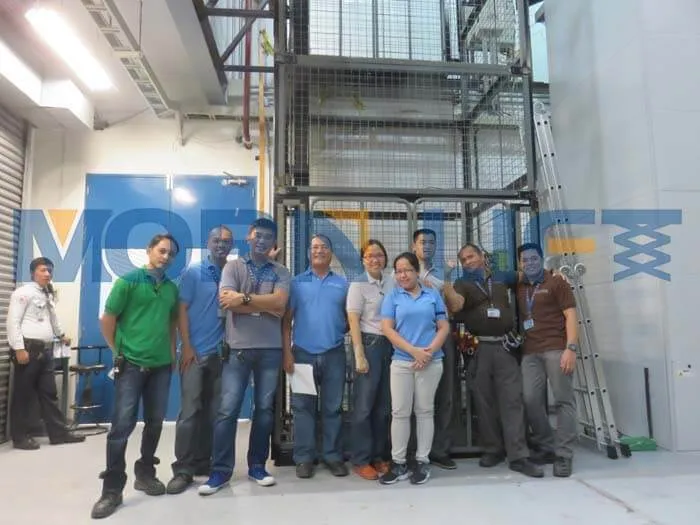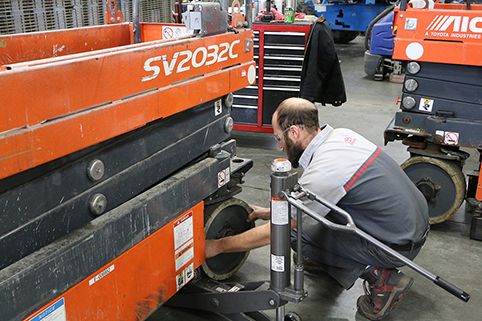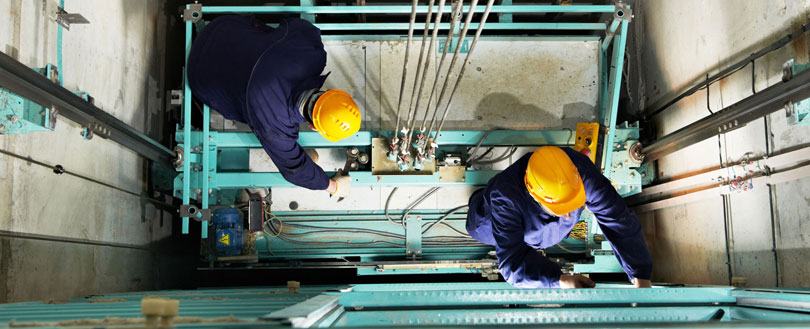24/7 Lift Maintenance Repair: Motivate and Reliable Solution
Wiki Article
Pro Tips for Preserving Your Lift in Leading Problem: An Extensive Introduction
Making sure the optimal performance of a lift system is critical for a secure and efficient procedure in various setups, from industrial stockrooms to industrial structures. By adhering to an organized maintenance program and preemptively addressing prospective issues, lift owners can minimize expensive downtime and safety and security dangers.
Importance of Normal Maintenance
Routine maintenance of your lift is crucial to ensure its optimum performance and durability. By sticking to a regular upkeep timetable, you can determine and attend to potential problems prior to they intensify into expensive repairs or unforeseen downtime. Regular upkeep jobs such as lubricating relocating parts, examining for damage, and checking hydraulic systems can assist prevent malfunctions and make sure risk-free operation.Ignoring normal upkeep not just jeopardizes the performance of your lift yet additionally poses security threats to users and building. Components that are not correctly kept might fall short suddenly, leading to accidents or damage to the lift itself. Additionally, addressing issues at an early stage through maintenance can prolong the life expectancy of your lift and minimize the chance of significant failures.
Along with boosting safety and security and efficiency, routine maintenance can also save you money over time. By buying preventative upkeep procedures, you can prevent costly repairs or replacements that might emerge from ignoring the upkeep of your lift. In general, prioritizing normal upkeep is necessary for maximizing the capability and long life of your lift system.
Top Components to Evaluate

Furthermore, pay close interest to the lift's security functions, such as emergency situation quit switches, security sensors, and interlocking systems, to ensure they are working properly. Routinely check the lift shaft for particles or obstructions that could hinder the movement of the lift vehicle.
Positive Fixing Techniques
When faced with potential lift system issues, adopting aggressive repairing methods can substantially boost functional effectiveness and avoid costly downtime. Among the vital aggressive repairing strategies is to consistently assess and check lift efficiency information. By tracking metrics such as lift rate, motor temperature, and power usage, maintenance groups can recognize very early indications of potential issues and take rehabilitative activities before they escalate. Conducting regular visual assessments of essential parts, such as cords, pulley-blocks, and security mechanisms, can also assist in discovering deterioration or misalignments that might cause malfunctions. Furthermore, implementing a preventive upkeep schedule that consists of lubrication of moving parts, screening of emergency brakes, and calibration of sensing units can proactively deal with usual lift system issues.Furthermore, investing in training programs for upkeep staff on troubleshooting techniques details to the lift model mounted can empower them to diagnose and resolve problems quickly. By remaining in advance of possible problems through positive troubleshooting, lift drivers can ensure a smoother and much more reliable operation while reducing the danger of unanticipated breakdowns.
Important Lubrication Practices
Carrying out correct lubrication techniques is essential for making sure the smooth procedure and long life of lift systems. Regular lubrication helps decrease friction between moving components, protecting against wear and tear that can lead to expensive fixings and downtime. Adhering to a rigorous lubrication routine is necessary. when it comes to lift maintenance.Choosing the ideal lubricant is the initial step in effective maintenance. Various components of the lift system may need particular kinds of lubes, such as oil or oil. Seek advice from the manufacturer's guidelines to establish the proper lubes for every part.

Consistently examining the problem of lubricated components is also crucial. Look for indications of too much wear, contamination, or insufficient lubrication. Resolve any problems promptly to avoid more damage and make sure the ongoing smooth operation of your lift system. By focusing on appropriate lubrication techniques, you can expand the life-span of your lift and optimize its performance.
Safety And Security Measures for Lift Operators
In order to maintain a secure functioning atmosphere and support operational efficiency, lift operators have to rigorously adhere to prescribed safety and security methods, along with prioritizing important lubrication practices for optimal lift efficiency. Safety procedures for lift operators are critical to avoid crashes and make certain the smooth performance of the lift system.Moreover, lift drivers should prioritize personal protective tools (PPE) such as headgears, handwear covers, and harness when operating at heights or taking care of heavy lots. Clear communication amongst operators, upkeep specialists, and various other personnel is crucial to stop misconceptions that might bring about mishaps. Last but not least, operators must remain vigilant, focused, and stay clear of interruptions while running the lift to ensure the security of themselves and others around.
Conclusion
To conclude, maintaining a lift in leading problem is vital for ensuring security and performance in procedures. Routine upkeep, thorough evaluations of crucial parts, proactive troubleshooting, proper lubrication methods, and adherence to security actions are important for extending the life expectancy of the lift and stopping crashes. By adhering to these standards, lift drivers can make certain the ongoing functionality and safety of their equipment.By adhering to a structured maintenance regimen and preemptively dealing with potential issues, lift proprietors can minimize expensive downtime and safety and security risks. Frequently inspect the lift shaft for debris or obstructions that could hinder the movement of the lift vehicle.In order to maintain a safe functioning setting and promote functional effectiveness, lift operators should rigorously stick to suggested safety and security procedures, together with prioritizing important lubrication practices for optimum lift efficiency. Safety measures for lift drivers are vital to stop mishaps and guarantee the smooth functioning of the lift system. Normal upkeep, complete assessments of essential parts, positive troubleshooting, proper lubrication techniques, and adherence to security steps are essential for lengthening the life expectancy of the lift and preventing crashes.
Report this wiki page